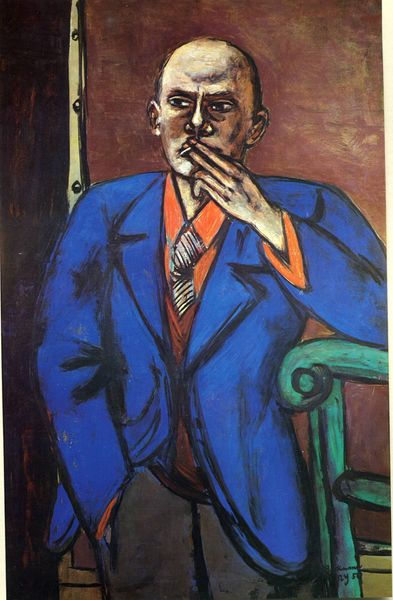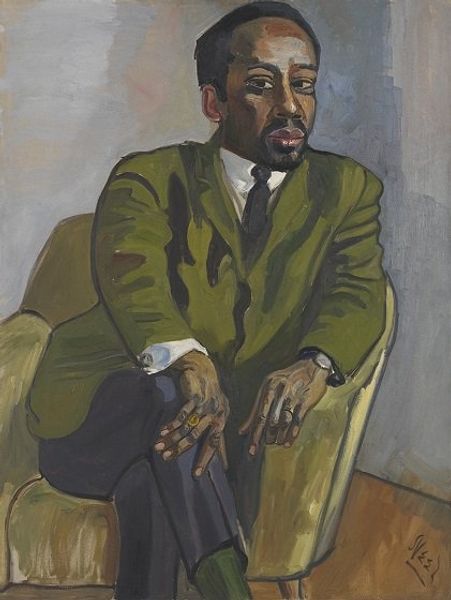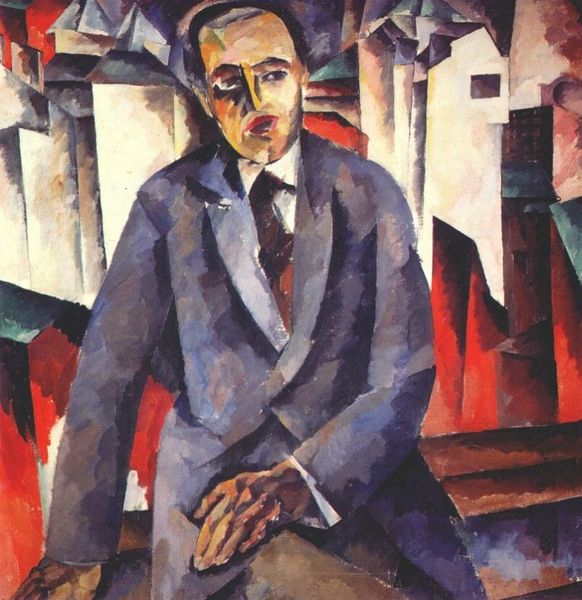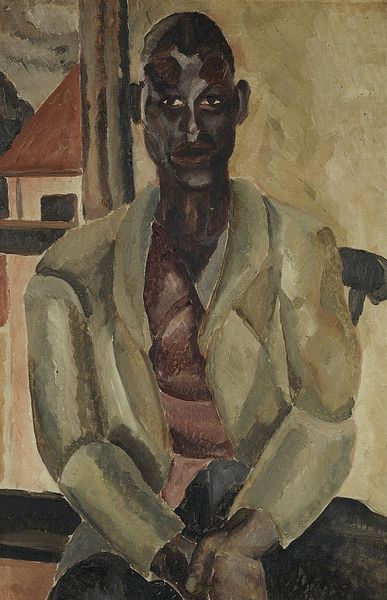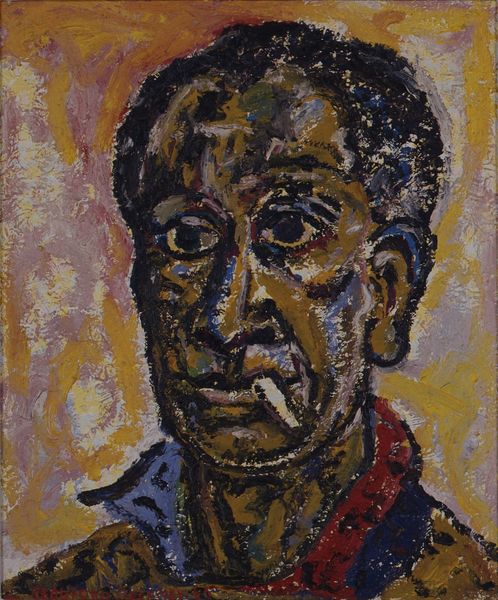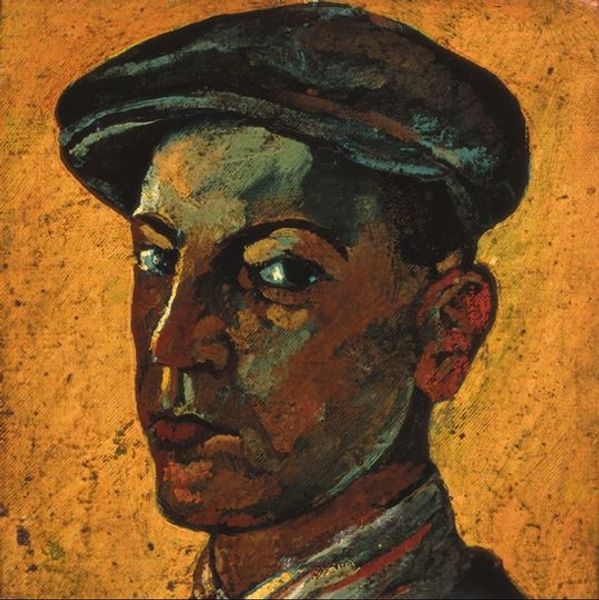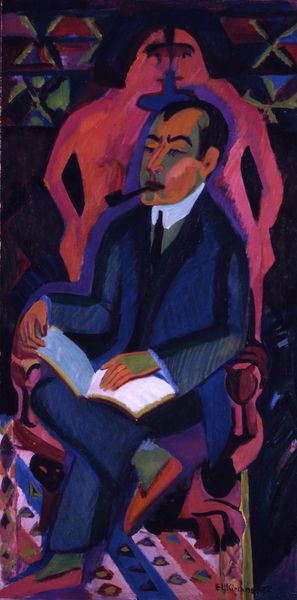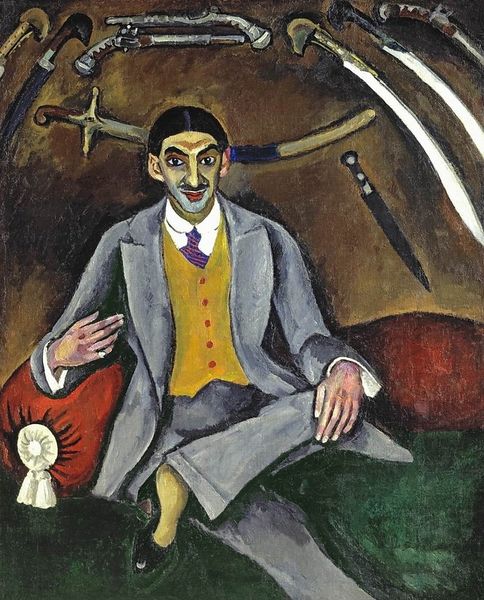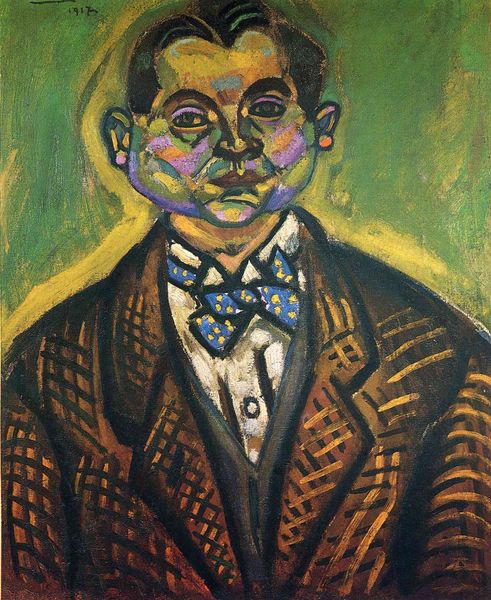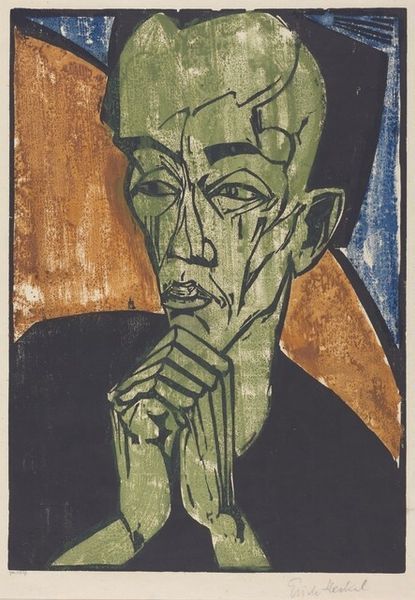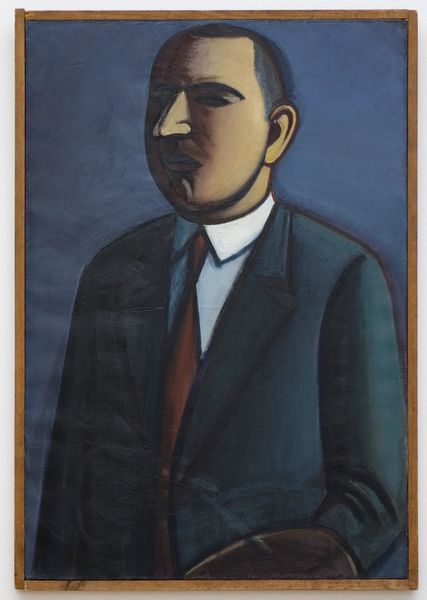
painting, oil-paint
#
portrait
#
self-portrait
#
narrative-art
#
painting
#
oil-paint
#
harlem-renaissance
#
figuration
#
portrait reference
#
acrylic on canvas
#
portrait drawing
#
portrait art
Copyright: William H. Johnson,Fair Use
Curator: We’re looking at William H. Johnson’s "Portrait of Fletcher," created in 1939. Editor: The first thing that strikes me is the intense, almost confrontational gaze of the sitter, coupled with this vibrant palette. Curator: Indeed. Johnson's bold use of color is immediately apparent. Notice the juxtaposition of the deep greens and blues in the suit against the warm red of the chair, set against this intentionally crude, mottled background. The brushstrokes are quite assertive and don't try to hide themselves. Editor: I am very drawn to the direct gaze and formal attire, which seems to suggest a narrative about self-respect, defiance, or perhaps resilience during that era. Is he representative of the "New Negro," conscious and confident? Curator: I find that analysis quite plausible. The artist may well be conveying Fletcher’s dignity through the formal pose, but this can also be explored through visual analysis. For instance, the figure’s hands are centrally positioned; these are strong, competent hands; and with their pale fingernails form an interesting contrast against his complexion, acting almost like points or notations. Editor: Those hands, resting confidently in his lap, feel symbolic to me – of restrained power, maybe even the potential for action despite outward composure. They contrast against what might seem a cartoonish overall design; Johnson manages to convey immense emotional complexity by contrasting stereotypical depictions and a determined symbolism in dress. Curator: Precisely. One can explore how those deliberately “naïve” artistic choices underscore a tension, perhaps echoing the social tensions of the period. It serves as more than a mere representation; it is an invocation of presence and character. Editor: Ultimately, “Portrait of Fletcher” serves as an insight to cultural memories, the ongoing search for identity, and resilience conveyed through considered pose, attire, and symbolic features of presentation. Curator: A fascinating study on the semiotics and construction of the image, reminding us how formal elements create both visual harmony and powerful discourse, making us think about the portrait's very ontology and place.
Comments
No comments
Be the first to comment and join the conversation on the ultimate creative platform.
